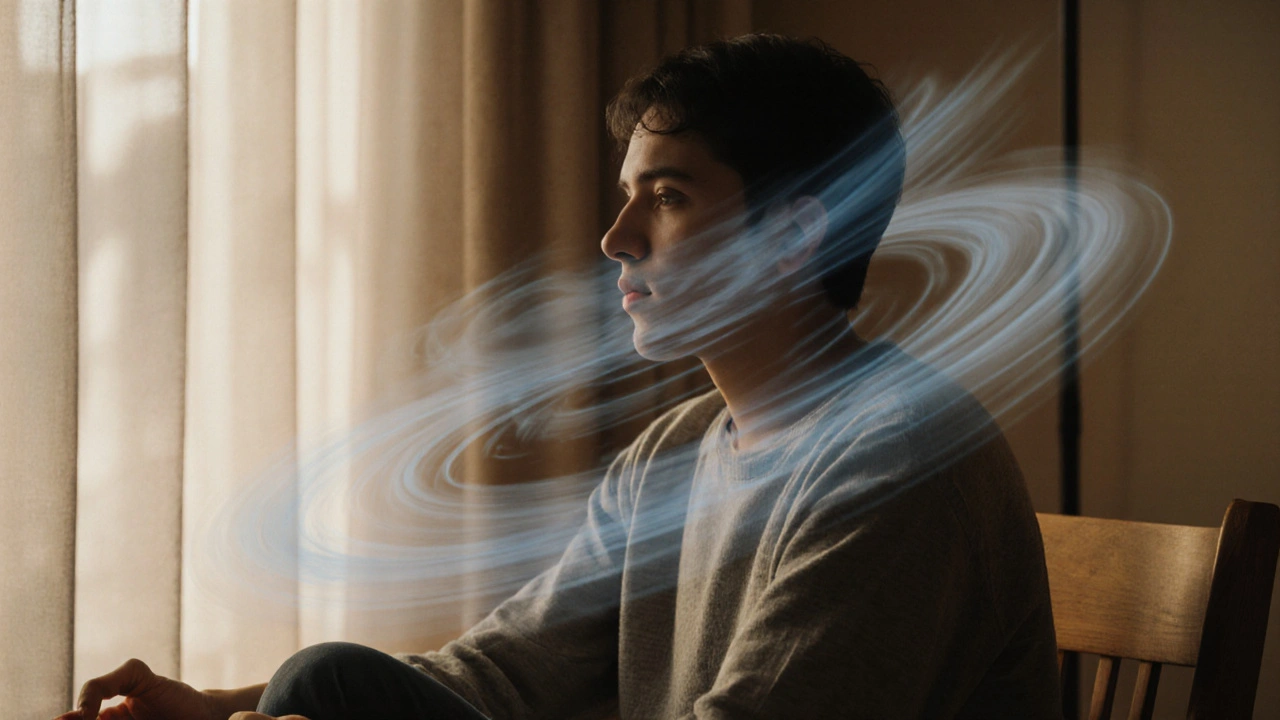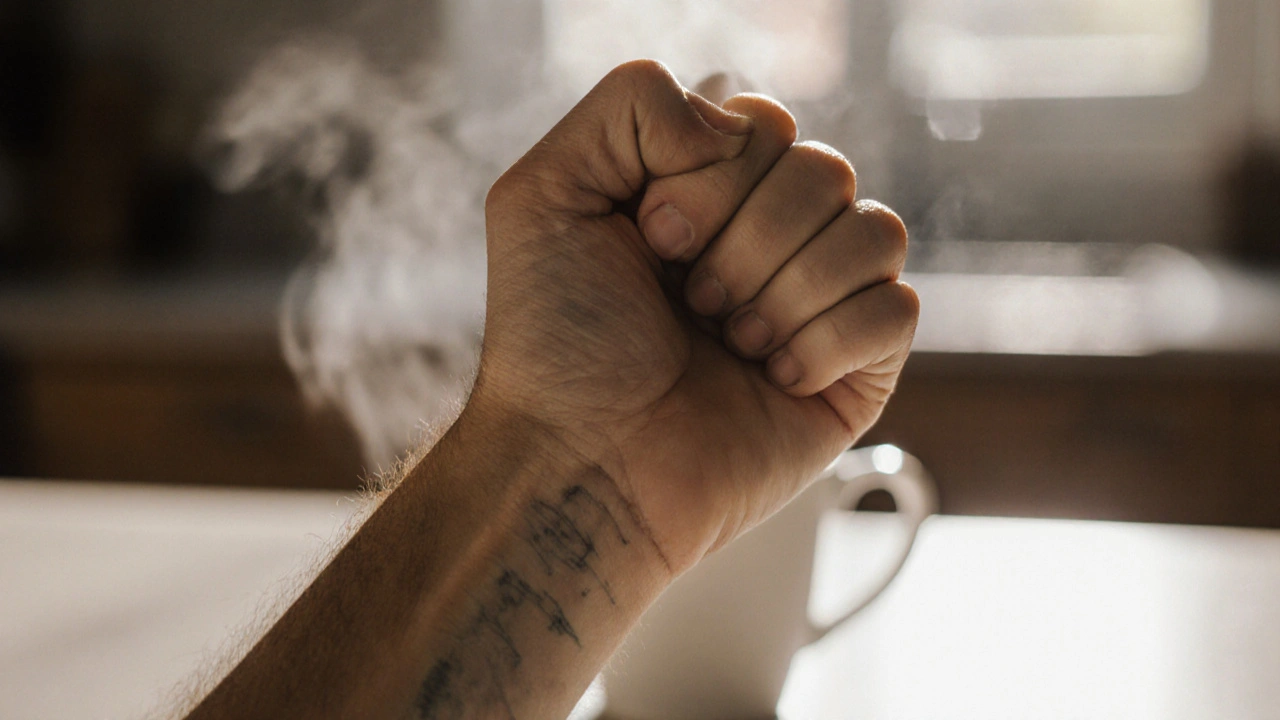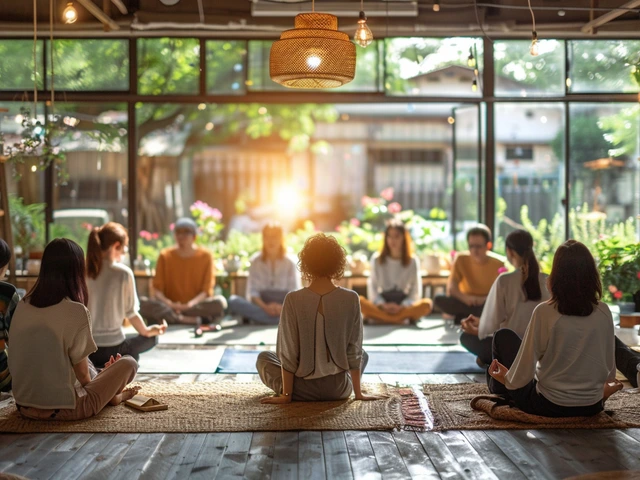
Relaxation Technique Selector
Find Your Perfect Calm
Answer these questions to discover which technique works best for your current situation.
Your Recommended Technique
Life doesn’t slow down, but you don’t have to keep running. If you’re constantly juggling work, family, bills, or just the noise in your head, you’re not broken-you’re human. And the good news? You don’t need a spa day or a month off to reset. Simple, science-backed relaxation techniques can bring calm back into your days, even if you only have five minutes.
Start with Your Breath
Your breath is always with you. It’s free, it’s always available, and it’s the fastest way to signal your nervous system to calm down. When you’re stressed, your breathing gets shallow and fast. That’s your body’s fight-or-flight response kicking in. But you can flip the switch just by changing how you breathe.Try this: inhale slowly through your nose for four counts, hold for four, then exhale through your mouth for six. Repeat five times. That’s it. No candles, no app, no special seat. Just you and your breath. Studies from Harvard Medical School show this kind of paced breathing lowers heart rate and reduces cortisol-the main stress hormone-within minutes. People who practice this daily report feeling more in control during traffic jams, before meetings, or when their kids are screaming at breakfast.
Progressive Muscle Relaxation: Tense and Release
Most of us carry tension without even noticing. Your shoulders are up by your ears. Your jaw is clenched. Your fists are tight. You’ve been like this for hours-or days. Progressive muscle relaxation (PMR) helps you notice and release that hidden strain.Here’s how to do it: Start with your feet. Tighten the muscles as hard as you can for five seconds. Then let go completely. Feel the difference. Move up slowly: calves, thighs, abdomen, hands, arms, shoulders, face. Squeeze each group, then drop it. You’ll be surprised how much weight lifts off your body. A 2023 study in the Journal of Clinical Psychology found that people who did PMR for 10 minutes a day, five days a week, saw a 34% drop in anxiety symptoms after just four weeks. It’s not magic. It’s physics-tension stored in muscles creates mental tension. Release the body, and the mind follows.
Ground Yourself with the 5-4-3-2-1 Method
When your thoughts spiral-when you’re stuck in a loop of worry, regret, or fear-your brain gets stuck in the future or the past. The 5-4-3-2-1 technique pulls you back into your body and the present moment. It’s used by therapists working with panic attacks, but you don’t need a diagnosis to use it.Pause. Look around and name:
- Five things you can see
- Four things you can touch
- Three things you can hear
- Two things you can smell
- One thing you can taste
It sounds simple, but it works because it forces your brain to switch from emotional processing to sensory processing. Your amygdala (the alarm center) quiets down. I’ve used this on my porch in Cairns after a bad day at work. I’d feel the rough bark of the mango tree, hear the kookaburras laughing, taste the salt on my lips from the sea breeze. Suddenly, the problem didn’t vanish-but my panic did.

Move Your Body-Even a Little
You don’t need to run a marathon or do yoga poses on Instagram. Movement is medicine. Even five minutes of stretching, walking, or dancing in your kitchen can shift your mood. Why? Because physical activity releases endorphins-your body’s natural painkillers and mood boosters.Try this: Stand up. Roll your shoulders back ten times. Stretch your arms over your head and lean gently side to side. Walk around your house, one lap, no phone. Feel your feet on the floor. Notice how your body feels. This isn’t exercise. It’s reconnection. A 2024 review in Frontiers in Psychology showed that brief, low-intensity movement breaks throughout the day reduced perceived stress levels by 27% compared to people who sat still. You’re not trying to burn calories. You’re trying to break the cycle of mental rumination.
Let Go With Guided Imagery
Your mind is powerful. It can make you feel like you’re drowning in stress-or like you’re lying on a quiet beach. Guided imagery uses that power for good. You don’t need a recording. Just close your eyes and imagine a place that makes you feel safe and calm. It could be a childhood spot, a vacation you loved, or even a made-up place-just make it vivid.What do you see? Is it warm sunlight on your skin? The sound of waves? The smell of pine trees? Add details. A breeze. A cool drink in your hand. A dog sleeping beside you. Stay there for two minutes. Don’t force it. If your mind wanders, gently bring it back. This isn’t daydreaming. It’s active neural rewiring. Research from the University of California shows that people who practiced guided imagery for 10 minutes a day reported better sleep, lower blood pressure, and fewer headaches within three weeks.

Make It Stick: Small Habits, Big Results
None of these techniques work if you only use them when you’re overwhelmed. They work because they become habits. Pick one. Just one. Do it at the same time every day for a week. Maybe it’s breathing before you check your phone in the morning. Or PMR while you wait for your coffee to brew. Or the 5-4-3-2-1 method when you’re stuck in line at the supermarket.Track it. Not with an app. Just put a checkmark on your calendar. One mark per day. After seven days, you’ll feel it. Not because you’re perfect. But because you’ve trained your nervous system to expect calm instead of chaos.
What If You Don’t Have Time?
You don’t need more time. You need better moments. Ten seconds of deep breathing while the kettle boils. Three slow exhales before you answer a tough email. A stretch while you’re waiting for the microwave. These aren’t distractions-they’re resets. Your brain doesn’t know the difference between a 20-minute meditation and five seconds of intentional breath. What matters is consistency, not duration.Stress isn’t going away. But you don’t have to carry it like a backpack. These techniques aren’t about fixing your life. They’re about giving yourself permission to pause. To breathe. To reset. To be human.
How long until I notice a difference with relaxation techniques?
Most people feel calmer after just one session, especially with breathing or grounding exercises. For lasting changes-like better sleep, lower anxiety, or less muscle tension-it usually takes 7 to 14 days of consistent practice. It’s not about doing it perfectly. It’s about doing it regularly, even if it’s just for two minutes.
Can relaxation techniques replace therapy or medication?
No, they can’t replace professional care if you’re dealing with clinical anxiety, depression, or trauma. But they can be powerful tools alongside therapy or medication. Many therapists use these techniques as part of treatment plans because they help patients regain a sense of control. Think of them as daily maintenance-not emergency repairs.
What if I can’t focus or my mind won’t quiet down?
That’s normal. Trying to “clear your mind” is like trying to stop waves in the ocean. You don’t need to stop thoughts. Just notice them and gently return to your breath, your body, or your imagery. The act of returning-again and again-is the practice. It’s not about success. It’s about showing up.
Are some techniques better for certain situations?
Yes. Breathing works best for quick resets-before a meeting, during an argument, or when you’re overwhelmed. Progressive muscle relaxation is great for physical tension-after sitting all day or before bed. Grounding (5-4-3-2-1) is perfect for panic or dissociation. Guided imagery helps with sleep or emotional overwhelm. Pick the tool that matches the problem.
Do I need special equipment or apps?
No. Everything you need is already inside you. Apps and recordings can help at first, but they’re crutches. The goal is to learn how to do it without them. Once you’ve practiced a few times, you’ll be able to relax anywhere-in your car, on the bus, in a waiting room. You don’t need silence. You just need to remember how to breathe.
Next Steps: Start Today
Pick one technique. Try it once today. Right now, even. Take three slow breaths. Feel your feet on the floor. Notice one thing you can hear. That’s it. You didn’t need permission. You didn’t need more time. You just needed to remember you’re allowed to pause.Stress doesn’t disappear because you’re strong. It fades because you’re gentle-with yourself.





